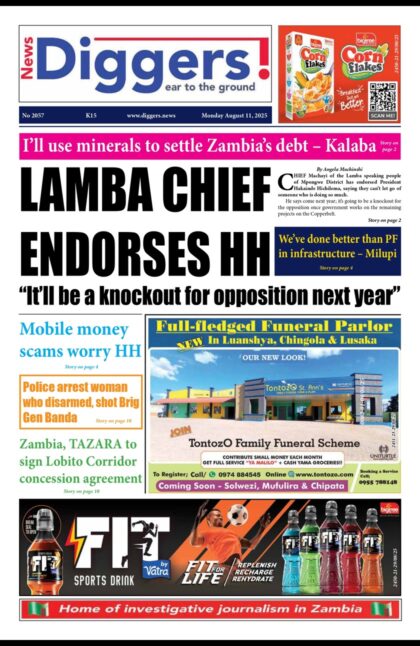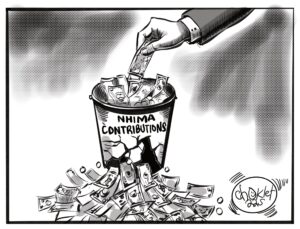THE Auditor General’s report has revealed that there is a drastic decrease in the enrollment rate of Learners with Special Education Needs (LSEN) as well as those progressing from primary to secondary school.
The report has also revealed that there is no adequate infrastructure in schools to accommodate learners with special education needs, which forces schools to teach all learners with various disabilities in one classroom using different boards at the same time.
The report has also revealed that learners with special education needs are made to write the same examination as mainstream learners without considering their different abilities and are not even allocated separate classrooms.
Meanwhile, the report has revealed that the Special Education Unit does not have its own budget line under the Ministry of General Education, which makes the funding to the unit insufficient and difficult most times.
In the performance audit on the provision of special education in primary schools for the period 2014 to 2018, it was revealed that for the years 2014, 2015 and 2016, learners who enrolled into primary school were 89,134, 89,646 and 103,218 respectively, while those progressing into secondary school were only 7,471, 17,369 and 20,092 respectively.
“Progression of LSEN Statistics show that the enrollment rate of learners with special needs reduces drastically from primary to secondary. For the years 2014, 2015 and 2016, learners enrolled into primary school were 89,134, 89,646 and 103,218 respectively, while those progressing into secondary school were 7,471, 17,369 and 20,092 respectively. [And] according to interviews with the ministry management, there were no laid out standard guidelines on infrastructure development for SE (Special Education) under MOGE (Ministry of General Education). A further review of the Educational Statistical Bulletin (2015, 2016 and 2017) showed that statistical information on infrastructure in special schools was not included in the bulletins. Despite the lack of guidelines, some schools visited had built ramps and walkways to aid the physically disabled to have mobile access in the school,” the report revealed.
It also noted that teaching and learning materials to ensure quality special education were not provided to LSEN at all levels of the education system.
“Appropriate assistive devices and teaching and learning materials are essential. Examples of learning and teaching aids for LSEN include braille materials, hearing aids, large print, augmentative and alternative communication devices.60In an interview, the Ministry management indicated that SE did not have a specific budget line allocated to it for the purchase of learning and teaching materials. Instead, each of the four directorates under the ministry allocated an arbitrary figure towards the purchase of requisite materials and therefore, purchases were only made as and when the directorates provided funds. According to management, learning and teaching materials were not procured regularly due to insufficient funding,” the report read.
It further revealed that there was no adequate infrastructure in schools to accommodate learners with special education needs who were further made to write the same examination as mainstream learners.
“LSEN are expected to sit the same exam as children in the mainstream, except they are eligible to 25% extra writing time. However, these guidelines did not consider the different disabilities as well as the degrees of disability in these children. For instance, those without limbs or had autism or other specific learning disabilities were still expected to write the same exam. Interviews with ministry officials also revealed that children with health-related disabilities such as intellectual disabilities could not handle stressful situations such as examinations for a lengthy period. For example, the grade seven exams have two exam sessions held on the same day, an hour apart. Interviews indicated that learners with such disabilities needed to rest for a bit more than two hours before they could be in the right frame of mind to sit the next exam,” the report read.
“Then on information on infrastructure, ministry management revealed that there was no laid out standard guidelines on infrastructure development. Physical inspection of eight schools and 14 units revealed that there were no specialised rooms available such as sickbay, multi-purpose gym, resource rooms, assessment and observation room and multi-sensory rooms. All of the 14 units visited were allocated one room for all grades or levels under SE. The Ministry was to construct a special school in each province in 2015 and 2016. However, no schools were constructed as at August 2019. Interviews revealed that due to inadequate funding, only one specialised school was being constructed in Lusaka out of all the 10 Provinces.”
The audit also noted the absence of measures that ensured equal opportunities to education for children with special needs.
“Identification and screening educational assessment such as speech and reading were done by teachers while more complex cases were referred to local health facilities. However, the SE schools and local health facilities were not able to assess severe cases as they lacked equipment and referred these to the assessment centres. There are only four SE assessment centres in the country, namely University Teaching Hospital (UTH), Zambia Institute of Special Education (ZAMISE), University of Zambia (UNZA) and Holy Family in Monze. Three are in Lusaka Province and only one in Southern Province which made it difficult for those in other provinces to access these centres,” read the report.
























